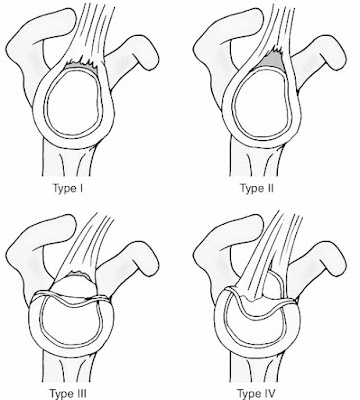Indications 1. For displace fracture of the humeral shaft with shortening, and also for oblique and spiral fractures –(Caldwell, 1933) 2. Used for comminuted humeral fracture, distal humeral shaft fracture. · Cast must be lightweight and must extend from at least 1 inch proximal to the fracture site to wrist, with elbow at right angle & forearm in neutral rotation. · Arm must lie dependent to provide a traction force. · Patient must sleep erect or semi-erect to avoid supporting elbow when seated. · Erect position is maintained during the day as much as possible. · There should be no support under the elbow, and nothing should compress the arm against the body (such as clothing). It is frequently exchanged for functional b...





Comments
Post a Comment